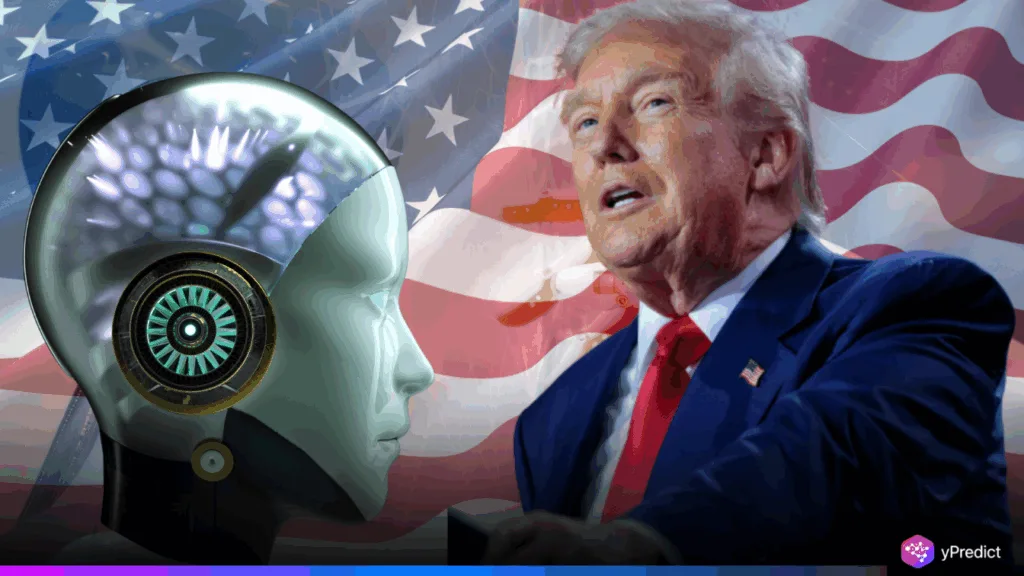
On July 23, 2025, former President Donald Trump delivered a high-profile speech introducing “Winning the AI Race: America’s AI Action Plan.” The speech, shared widely after an August 2 X post by The All-In Podcast, signaled a strategic push to establish U.S. dominance in artificial intelligence. Trump’s plan is built on three pillars: innovation, infrastructure, and exports, with non-negotiables centered on protecting American workers and preventing ideological bias. He also signed three executive orders on AI bias, data center expansion, and international tech exports, signaling a serious shift in AI policy toward deregulation and national competitiveness.
Trump’s Three-Pillar AI Plan Emphasizes Deregulation and Infrastructure
Trump’s plan focuses on accelerating U.S. leadership in the AI race by prioritizing innovation, infrastructure, and exports. Under the innovation pillar, the former president vowed to eliminate “red tape” that stifles AI development. They will rewrite federal procurement policies to ensure AI systems used by the government are free from what he calls “woke bias,” directly targeting existing content moderation practices.
The infrastructure component proposes major investments in energy, grid upgrades, and data centers, with fast-tracked permits and environmental rollbacks. The goal: to support domestic AI compute demands and reduce reliance on foreign hardware. Meanwhile, the export pillar aims to distribute a full U.S.-branded AI stack, hardware, models, and standards to allied nations, countering China’s influence. Trump signaled three executive standards to strategically thrust parts of this plan into shaping American innovativeness: one on AI bias, one easing data center approvals, and one on tech exports. Together, they are intended to bring immediate U.S. leadership while avoiding the regulatory pace of previous advancement.
Policy Sparks Debate Over Jobs, Bias, Global Competition, and UBI
While the plan was praised by some tech leaders, including David Sacks, it has sparked controversy over its implications. Trump’s non-negotiables include a focus on American workers benefiting from AI, yet critics worry about job displacement. Some users on X called for Universal Basic Income (UBI) to offset losses, while others raised concerns over removing environmental protections and copyright enforcement.
The explicit rejection of “woke AI” also reignited debates about ideological bias in large models. Trump’s order aims to ensure federal AI tools are “neutral,” but critics argue that such mandates could politicize content filtering. The export-first approach, meanwhile, may intensify global AI race tensions, particularly with China. Previous efforts, like bans on AI chips, have proven unsuccessful at stalling China, raising serious doubts about whether this new strategy will work. Supporters of the move claim it is equivalent to the modern-day space race, while opponents see risks to free speech, regulation, and creativity. The impact on smaller developers is certainly uncertain.
AI Strategy Mirrors Space Race, but Success Will Hinge on Execution
Trump’s AI race action plan mirrors JFK’s 1960s space race moment, positioning AI supremacy as a matter of national pride and survival. It offers a bold vision: deregulate, build, export, fast. The plan clearly targets both economic and geopolitical stakes, aiming to outpace China while satisfying a base wary of overreach and bias. However, execution is key. Whether these sweeping policies empower U.S. developers or simply benefit major firms depends on enforcement, transparency, and follow-through. The world is watching, and so is a divided public. The AI race is on, but it’s not just about speed; it’s about direction.






